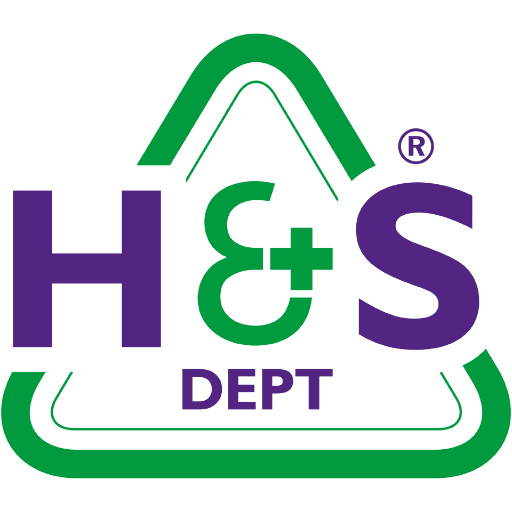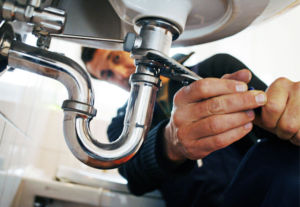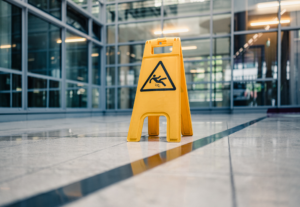Workplace violence is on the rise
Assaulting a retail worker will become a separate criminal offence in England and Wales under new legislation announced by the government earlier this month. This will bring the two nations in line with Scotland, where a similar law has been in force since 2021.
The announcement follows a recent report by the British Retail Consortium which found that violence and abuse against shop workers has risen by 50% in the last year. Under the new law, offenders can be sentenced to six months in prison, given an unlimited fine and banned from the shop where the incident took place.
Many are hoping that this will act as a deterrent, but a change in the law doesn’t mean that the danger has disappeared. If you employ public-facing workers, now might be a good time to review how you manage workplace violence in your risk assessment. With the data showing more of a threat you could assess scenarios which act as flashpoints, and reconsider which workers are particularly vulnerable (e.g. those working alone or at night).
This will lead into producing a safe system of work that reduces the likelihood of violence and sets out the best response to a violent incident. If you’re unsure about anything, don’t hesitate to ask us for help.
Hiring a subcontractor? Make sure they’re qualified!
It’s easy to assume that the people we hire are qualified for the job. However, as a recent HSE prosecution showed, this isn’t something we should take for granted.
Earlier this year, an unregistered plumber was given a six-month suspended prison sentence after carrying out illegal gas work at a house in Peterborough. He mistakenly connected the house’s gas and water pipes, causing the gas pipes and gas meter to flood. He was later found to have received no formal training, nor to have registered with the Gas Safe Register – a legal requirement for anyone working with gas.
Fortunately nobody was harmed, but this incident highlights how important it is to verify the expertise of anyone performing critical work on your premises. When hiring a subcontractor, always ask to see proof of their qualifications. If you have any doubts, contact the relevant trade body and check they are registered.
Do you need to provide slip-resistant footwear?
As Rishi Sunak recently discovered, wearing the wrong shoes to work can be a costly mistake. He was pictured wearing Adidas Sambas during a televised interview, leading to accusations that he had ruined the famous trainer’s trendy image. Sunak later responded with a video in which he offered “a fulsome apology to the Samba community”.
The Prime Minister may have only harmed the Samba’s credibility, but there are situations where inappropriate footwear can be far more dangerous. Slips, trips and falls are the most common type of workplace accident, accounting for a third of all injuries to UK employees. While trips and falls are usually caused by unseen obstacles, footwear can be a key factor when it comes to slips.
As an employer, you have a duty to reduce slipping hazards as much as possible. Your first priority should be removing these hazards altogether, but this may not always be possible.
If your workplace contains frequent, unavoidable slipping hazards, The Personal Protective Equipment at Work Regulations 1992 require you to provide slip-resistant footwear for your employees. Workplaces that may fall into this category include restaurants and kitchens; swimming pools and leisure centres; factories and warehouses; and certain healthcare settings.
Slip-resistant footwear isn’t standardised, so it’s up to you to choose the most appropriate product. It’s an important decision, so take your time and consider the following:
- Providing suppliers with details of the surfaces and contaminants in your workplace will allow them to suggest the most appropriate choice. Some suppliers will also offer additional slip testing based on this information.
- It’s a good idea to order trial pairs before settling on a product. Test these with a representative group of employees and listen to their feedback before ordering in bulk.
- Tread patterns make a big difference. Generally speaking, a close tread pattern is better for indoor environments and fluid contaminants, while a wider tread works better outdoors and with solid contaminants.
- Oil-resistant is not the same as slip-resistant. Oil-resistant just means that the shoe won’t be damaged by oil.
Some workplaces may require footwear with other safety features besides slip-resistance. In these cases, you’ll need to weigh up the pros and cons of each option before settling on the safest compromise. Remember that even the best shoes can become less effective over time, so it’s important to have a system in place to check for wear and tear. If you’re unsure about anything, don’t hesitate to ask.
Even the biggest companies get risk assessments wrong
Risk assessments are one of the most fundamental elements of workplace health and safety. The law requires every employer to identify workplace risks and to set out the steps they will take to reduce them. This needs to be updated at regular intervals, or whenever the working environment changes.
We’re sure you’re well acquainted with these rules, but not every workplace is so conscientious – whether through oversight or a blatant disregard.
INEOS, the world’s fourth largest chemicals company, was fined £400,000 after an employee fell into a tank of caustic hydroxide. The worker’s leg was submerged in the chemical for three seconds, incurring permanent scarring in the process. The HSE found that INEOS had failed to carry out a risk assessment, or to implement a safe system of work for the task involved. As a result, the grate over the tank was left unsecured and no barriers were placed around it.
This extreme example shows that even if you’re sure you’re up to date, it never hurts to double check your risk assessments.
If you would like an independent review, we can cast a fresh set of expert eyes over your workplace, identifying risks you might have missed and highlighting areas where a new assessment is needed. We can also carry out the assessment itself and provide clear guidance on implementing its recommendations. If you’re looking for something quicker, our online risk assessment training can be completed in just 30 minutes. Talk to our team to find out more.
Service of the month: Stress risk assessments
Stress is a serious problem in UK workplaces. There were 875,000 cases of stress, depression and anxiety in 2022-23, accounting for over half of all workplace ill health. Stress affects over three quarters of British workers, with a third saying that it harms their productivity.
Mental health risks are often seen as a lesser danger, but they should be taken just as seriously as physical hazards. The law makes no distinction between the two, requiring employers to reduce all risks as far as is reasonably practicable. This means carrying out a risk assessment not just for physical dangers, but for possible contributors to stress.
A stress risk assessment should focus on elements of the job that may be especially stressful. These could include jobs performed under time pressure or tasks where the outcome is unpredictable. It should also take into account any personal circumstances that could make particular employees more vulnerable to stress.
These dangers are often hard to spot from the inside, which is why we recommend bringing in an expert. We offer a dedicated stress risk assessment service, covering everything from writing the assessment to providing you with a list of recommendations. Get in touch to find out more.






